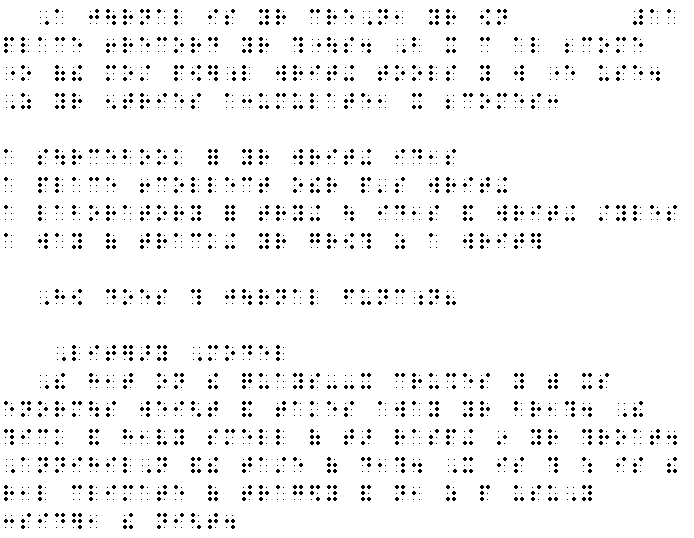|
Complete documentation for displayed material is provided in Rule 14, §1 of the Formats code.
Displayed materials are those examples that are somehow set off from the main body of the text, through the use of:
- blank lines
- special typeface(s)
- changes in margins
- reduced print or font size
The transcriber is cautioned that different rules apply to examples for tests or exercises, and that those examples must be transcribed in accordance with Rule 13, §4 of the Formats code.
The main provisions of the rule on displayed material is the use of a blank line before and after the example. Follow the print copy in terms of indentations, using block paragraphs if appropriate. Items in a list begin in cell 1 with runovers in cell 3. Items that are spaced apart on the same print line should have three blank cells in between them.
An example that looks to include many of the items listed in this rule is shown below. This example comes from Volume 2: Braille Examples of BANA's "Braille Formats". In this example, the publishers are showing an example of a journal entry. Notice how the example is set off with a blank line preceding the text. The title of the example begins in Cell 5, and the text itself begins in Cell 3 with runovers in Cell 1.
| Print version |
 |
| Braille version |
 |
|